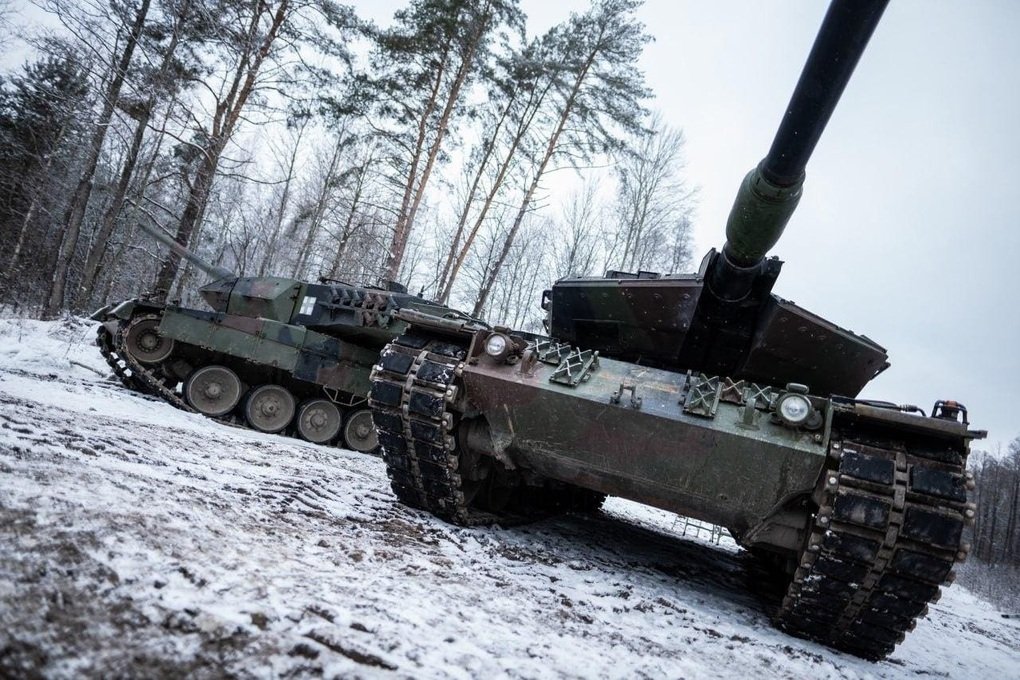
The reason why most of Ukraine’s Leopard 2 super tanks are lying `under cover`
(Dan Tri) – Most of Ukraine’s modern Leopard 2 tanks are in a state of non-combat because Kiev and its allies are seriously lacking components to repair them.
Ukrainian Leopard 2 tank after being repaired in Lithuania (Photo: Forbes).
According to open source intelligence platform Oryx, after a year of fighting since receiving the first German-made Leopard 2 vehicles, Ukraine has lost at least 12 vehicles.
However, this damage is not the reason why the Ukrainian army is struggling to mobilize Leopard 2 vehicles at the present time.
Theoretically, Leopard 2 could be attacked, then repaired to continue attacking.
Ukraine began its counteroffensive last summer with 50 Leopard 2A4s, 10 upgraded armored Strv 122s – the Swedish variant of the Leopard 2A5 – and 18 Leopard 2A6s with additional armor and 120mm smoothbore guns.
In principle, Ukraine currently has at least 59 Leopard 2s that can still fight.
Previously, German parliamentarian Sebastian Schäfer went to Lithuania to visit the Leopard 2A6 and Strv repair workshop.
This is not surprising to observers, because for decades, since the collapse of the Soviet Union, Germany has not stepped up investment in defense activities, so they lack components and parts.
In addition, in some cases, Ukraine tried to find ways to repair these tanks but only caused greater damage to Leopard 2 because this is a very modern and complex weapon.
To find a way to remedy the situation, Ukraine removed usable parts from the `irreparable` Leopard 2s and took them to Lithuania and Poland, where repair facilities are located.
Due to the lack of supplies, the tank repair process can take a long time before the Leopard 2 can be returned to the battlefield.
Germany and Ukraine have grasped the problem.
In the long term, if the war of attrition continues, Germany will have to ensure the production of large quantities of tank components at a regular and consistent frequency to speed up tank repairs.


